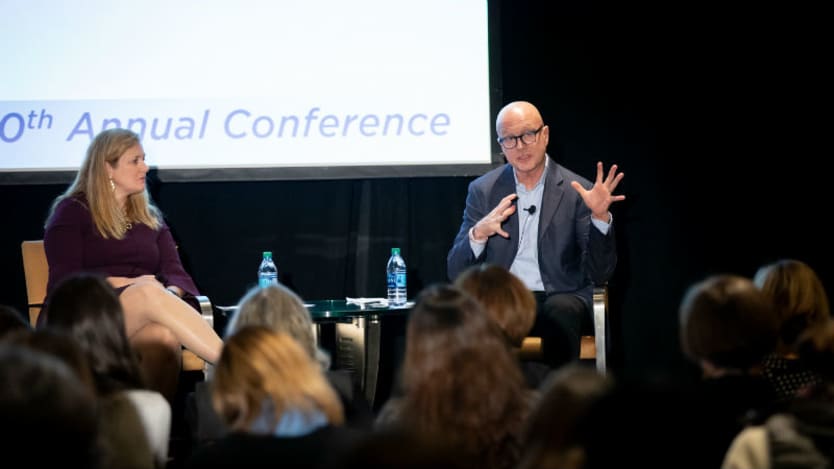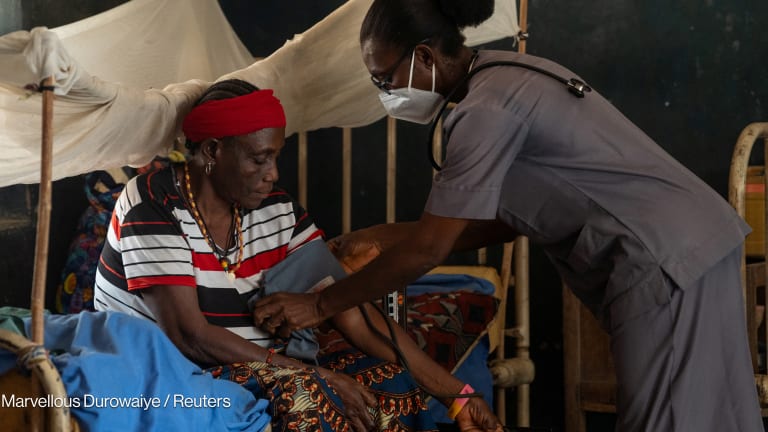
SEATTLE — David Keogh, president and CEO at the Center for Infectious Disease Research, is working himself out of a job.
Earlier this year, CIDR announced that it is merging with the infectious disease division of Seattle Children’s Research Institute.
“This shift to a more strategic, innovation-first agenda means that we’ve had to decline opportunities along the way.”
— Steve Davis, CEO, PATHDespite the challenges that have inevitably come with restructuring, the move has positioned both organizations well for the future, and advanced their work to prevent the death of children from infectious diseases.
“Aggressively pursue partnerships,” Keogh told Devex via email. “Make it about the shared mission, not about the institution.”
Last week, Keogh was one of the hundreds of nonprofit leaders who attended the annual Global Washington conference. For the 10th year in a row, the membership network Global Washington brought leaders from across the state — home to 268 organizations working on global health. Building on the conversation over the past two years on how to defend foreign aid in an America First era, this year’s conference narrowed in on ways that nonprofits can restructure in this period of uncertainty of funding for global health.
“As a nonprofit leader, you sit there and say, now what?” said Kristen Dailey, executive director of Global Washington. “How do you structure internally to prepare for the future?”
While PATH, one of the largest NGOs in the world, has grown by 70 percent over the past few years, that growth does not come without its challenges. Steve Davis, CEO of PATH, shared some lessons for other NGOs in a session called “the NGO of the Future.”
“2018 has been a nightmare in many ways,” he said. “Everyday it feels like whack-a-mole.”
PATH has grown to a team of more than 1,600 staff reaching 150 million people a year with its products and services. Like many NGOs, the organization is hitting the headwinds of the impacts of the Mexico City Policy, or “global gag rule,” in the United States and changing donor priorities caused in part by Brexit and the rise of nationalism around the world. But the organization has also evolved from being an implementing function of donor strategies to driving what it calls the One PATH Strategy.
Many global health programs operate based on “donor X or donor Y or donor Z wanting to do X or Y or Z,” Davis said, and while donors are critical partners, more NGOs need to ask what outcomes they want to achieve independently, he said.
While PATH has grown in recent years, the NGO has also said no to a number of opportunities, because of this strategic orientation.
“This shift to a more strategic, innovation-first agenda means that we’ve had to decline opportunities along the way, not because they aren’t worthy, but because they didn’t align with where we believe PATH can add the most value and impact,” Davis said in a follow-up email to Devex.
“In applying the priorities and boundaries of our institutional and health area strategies, we’ve had to say no a lot: from developing certain drug candidates to tackling large behavior change communications programs to building digital tools to serving as secretariat or as a core part of governance bodies.”
Saying no also means PATH can put more weight behind the problems it says yes to, he said.
One of the major problems with the social sector is that people are rewarded for growing organizations rather than solving a problem, said Marty Kooistra, who has worked on affordable housing in Washington State, and spoke at the Global Washington conference about how to scale through collaboration.
“Even big NGOs struggle to ensure their impact is greater than the sum of their parts,” he said.
He talked about what it means to put mission over organization, for example by mapping out partnerships, and ensuring that it is not the organization but rather the problem that needs to be solved at the center.
“The whole point of network leadership is working in partnership is so you can scale and be efficient without new funding,” Dailey said. “This whole idea of forming coalitions to increase impact and pool funding is really the wave of the future, and it’s hard. Partnerships are not natural.”
By bringing organizations with shared goals together, Global Washington has helped to foster a greater spirit of collaboration, and its members have launched a number of partnerships in the past two years.
For example, Mercy Corps, World Vision, CARE International, and other large NGOs came together to form the Global Emergency Response Coalition. Extend the Day, which produces solar lanterns for kids to study at night, has partnered with Spreeha, a nonprofit focused on health and education, to provide Rohingya refugees in Bangladesh with lighting. And Planned Parenthood of the Great Northwest and Hawaiian Islands is bringing its expertise in designing youth-friendly sexual reproductive and health services to a VillageReach mobile health hotline in Malawi.
“We have an organization and we have all these services and we’re driving towards a mission,” Dailey said of the mindset of most NGOs. “If we flip it to have the problem we’re trying to solve in the middle, that would change everything, but we’re just not set up for it.”
Update Dec. 14, 2018: This article has been updated to clarify that David Keogh is the president and CEO at the Center for Infectious Disease Research.








